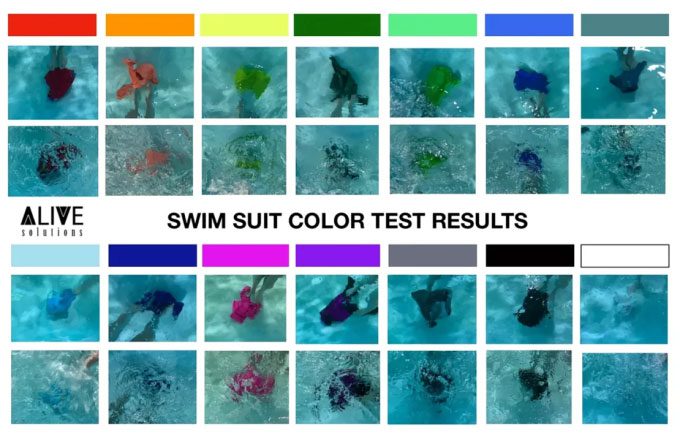Experts say that the color of swimwear can affect children’s safety at pools or beaches.
According to the experts, the color of swimsuits is crucial in preventing drowning incidents. Bright and contrasting colors stand out more, helping lifeguards and parents to quickly and easily spot children, especially in emergency situations, as noted by Bernard Fisher, the Director of Health and Safety at the American Lifeguard Association.
He advises parents to avoid dressing their children in blue, navy, or green swimsuits, as these colors can blend in with the water and surrounding environment, making it difficult to spot children. Fisher recommends choosing bright and contrasting colors such as neon yellow, orange, pink, and bright red. These colors are clearly visible both underwater and on the surface.
Alive Solutions conducted a study on underwater safety using 14 different swimwear colors and concluded that, in a pool environment, neon pink and neon orange are the easiest to detect. Darker colors are more visible against a light-colored pool bottom, but are often obscured by shadows. White and light blue swimwear do not stand out and can sometimes completely disappear in the pool.

Visibility scale of children’s swimwear in pool water environment. (Photo: Natalie Livingston).
Wyatt Werneth, a lifeguard at a Florida beach and spokesperson for the American Lifeguard Association, commented that the color of swimwear has not been widely discussed in the context of public safety.
“We recognize that bright clothing can be a determining factor. If you wear colors similar to the water or environment, you will blend in,” Werneth said while patrolling Cocoa Beach.
Lifeguards also note this detail when it comes to missing children. In fact, bright clothing colors help them locate children within the environment, especially when a child inadvertently appears in photos taken by bystanders.
Data shows that over 4,500 people drown each year in the U.S., from 2020 to 2022, an increase of about 500 people compared to 2019. Children are at a high risk of drowning. Some studies indicate that participating in formal swimming lessons can reduce the risk of drowning in children by 88%.


















































